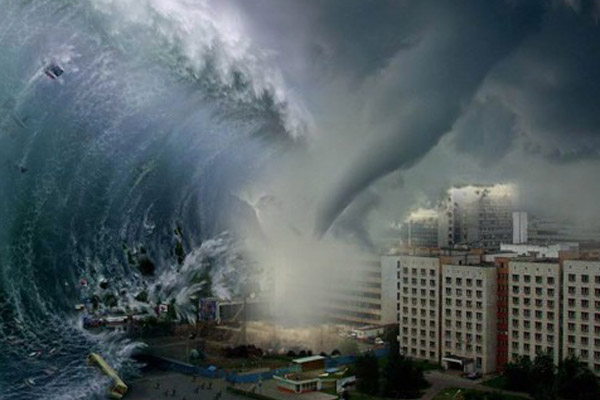Earth Damage Was Most Severe In The World
Earth Damage Was Most Severe In The World - Rising from the ocean, many miles off the coast of geographical area, there’s a volcano with a seventy three,000-year-old scar swiped across its face. this is often the mark of associate degree ancient catastrophe, incised into the rock once a large chunk of the volcano’s japanese flank rush all quickly into the ocean.
That particular flank collapse displaced enough water to get a robust tsunami—one that, new proof shows, might need been abundant, abundant larger than geologists antecedently believed. “Our work provides proof that the well-known collapse at Fogo volcano made a really giant tidal wave that wedged the close island of Santiago,” same economic expert Ramalho, associate degree Earth-sciences analysis fellow at the University of metropolis.
“Very giant,” even by tidal wave standards, appears like a real understatement here.
Ramalho and his colleagues known big boulders virtually 0.5 a mile upcountry, many feet on top of water level, that they believe were transported by a mega-tsunami. supported what they found, the scientists believe the tidal wave proud to a height of concerning 560 feet, tall because the monument, before inundating the island. “These characteristics build this event one among the biggest mega-tsunamis preserved within the geologic record,” Ramalho and his colleagues wrote in an exceedingly paper concerning their findings.
Flank collapses just like the one that decimated what's currently Santiago ar rare, however not extraordinary. Hawaii has its own history of mega-tsunamis, last concerning one hundred,000 years past. “One block of rock that fell off island is that the size of Manhattan,” wrote Becky Oskin in Live Science.
“Underwater pictures of the bottom encompassing the Sandwich Islands show that they're enclosed by immense aprons of scrap shed from their volcanoes over tens of numerous years,” the author Bill McGuire wrote in his book, A Guide to the top of the planet. “Within this nice topsy-turvy mass of volcanic cast-offs, nearly seventy individual big landslides are known.”
In a minimum of one such landslide, a 1,000-foot mega-tsunami slammed into the island of Lanai. A wave that massive on island nowadays would virtually actually wipe out capital of Hawaii. however scientists can’t say as expected how—or, critically, when—such a catastrophe would play out. That’s mostly as a result of nobody in recorded history has seen one among this stuff. “The lack of direct observations means very little continues to be far-famed on the mechanics of collapse development,” Ramalho and his colleagues wrote in their paper.
Most tsunamis ar generated from tectonic activity. as an example, immense earthquakes triggered the 2 most harmful tidal waves in recent history: the 2011 Japan tidal wave and also the 2004 Indian Ocean tsunami. In each cases, record wave height topped out between around one hundred feet and a hundred thirty feet.
Now imagine a tidal wave 5 or perhaps ten times that size.
Most scientists agree that a harmful flank collapse can generate associate degree unthinkably huge tidal wave once more sometime, however they’re cautious concerning shot once it'd happen. a well-liked ballpark estimate: perhaps someday inside following one hundred,000 years. regardless of the case, a volcanic-flank collapse in Hawaii would generate a series of big tsunamis that might possible destroy cities in many countries, together with within the us, Canada, Japan, and China, McGuire says. “In problem, tsunamis travel with velocities appreciate a large jet,” he wrote, “so barely twelve hours can go on before the soaring waves crash with the force of unnumerable atomic bombs onto the coastlines of North America and japanese Asia.”
The hazard of those “very low-frequency, terribly high-impact” geological events shouldn't be underestimated, Ramalho told Pine Tree State, however the potential for such catastrophes shouldn’t cause panic either. “We higher improve our resilience to their impacts,” he said. “We ought to improve our observation capabilities of doable volcanic sources, we must always do additional analysis on the topic, and that we should—rationally and cooly—think of what may be done to mitigate the doable impacts of such an incident.”




Comments
Post a Comment